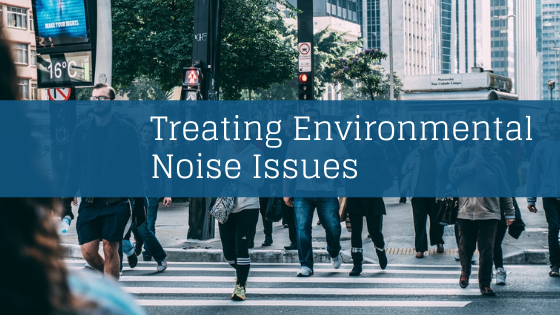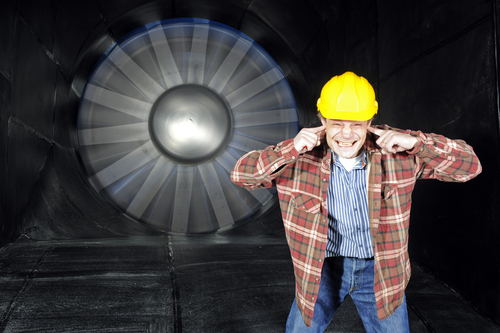Any noise that creates a sound over 85 decibels is more than a nuisance; it damages hearing and hurts workers, nearby residents, machinery, structures, and the environment.
Industrial noise is a large part of the problem says Occupational Health & Safety1.
Three places along the path of the sound wave are treatable to reduce the noise, but which method provides the best result for every receiver in the way of the sound?
Outdoor sound barrier walls provide the ability to eliminate sound instead of reflecting it thus protecting those who are nearest the noise origin.

Effects of Loud Noise Exposure on Workers and Nearby Residents
The Centers for Disease Control and Prevention2 say that nearly 22 million workers in the United States get exposure to too much noise.
The level is in the hazardous range meaning that these people will suffer from an inability to perform work tasks successfully and on time.
Nearby homeowners can have trouble remembering things, problems with blood pressure levels, and mental issues like depression and difficulty concentrating.
Any person near the noise source who experiences constant exposure to loud noise can become withdrawn and begin to isolate themselves from group activities and family outings.
These people are the most at risk to have sleep disorders like insomnia and trouble staying asleep because of the increase in stress levels or night exposure to the offensive sound.

Sound Reduction Begins In One Of Three Places
With cities growing larger, it is no wonder that factories, warehouses, and transportation hubs find the company in an area that has strict noise regulations.
These businesses have to control the noise to stay in operation. Industrial noise control can happen at one of three places, the source, the path between the receiver and the source, and the receiver.
1. Treating The Source of the Noise
When sound barrier solutions use absorptive barriers and materials that dampen the noise making the wave ineffective, then this solution works. These walls are lightweight, non-corrosive, and customizable.
The measurements and blueprints are easy to adapt to include vents, man-doors, equipment windows, and other openings. By stopping the noise at the source, the company protects employees and nearby machinery from damage as well.
Bolts and nuts do not loosen, the foundation does not shift, and employees do not get exposure to sound levels that can hurt hearing.
2. Path to the Receiver
Absorptive noise barriers prevent sound from continuing on the path to the receiver. Another solution is to put a barrier between the public and the company like a wall along the highway.
These sound systems prevent noise from the traffic from penetrating the neighboring community. The sound absorbing walls can withstand dirt, debris, and wind without worry of toppling over or falling apart.
3. Stopping Noise at the Receiver
While this option is often cost-efficient, it has the most disadvantages. Employees typically find that they cannot hear safety equipment like horns on forklifts when wearing headphones and earplugs.
They also report that it is more difficult to recognize changes in machinery that signal a breakdown or faulty system. Treating the source of the noise or the path seems to be a more viable solution.

Sound Wall Solution
Sound wall construction is possibly the most viable way to eliminate offensive noises and protect the environment. By choosing the technologies that get rid of the noise instead of reflecting it back towards workers or the environment, enterprises are helping communities instead of merely meeting regulations.
These walls are excellent options for any industry because of the customizable solutions whether for placement in front of an airport, around a utility substation, or surrounding a bank of robotic machinery.
Sources:
1 https://ohsonline.com/Articles/2007/09/Industrial-Noise-Control.aspx?Page=1
2 https://www.cdc.gov/mmwr/volumes/67/wr/mm6708a2.htm?s_cid=mm6708a2_e
Leave a Reply